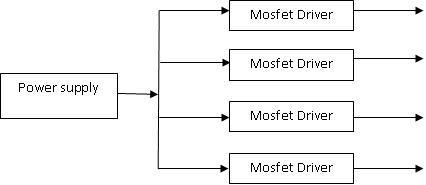32 Mosfet drivers have been used as 32 liner drivers, the frequency of line driving is 2MHZ, the capacitance of each load is 200pf and the power supply is 15V.
Based on those data, the min power needed is P = 32 x f x C x V x V = 56watt and the current supply is 3.75A.
Since each Mosfet driver can sink 117mA current, the rising time of output wave would be trise = (C x V) /I = 897ns.
My question is all those 32 Mosfet drivers share the same power supply, how I can make sure each Mosfet driver can sink the same current?
Can I use current limiting circuit or use any commercial chips from TI?



